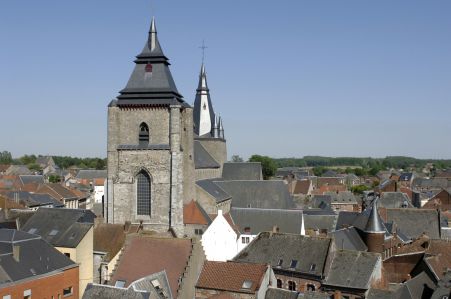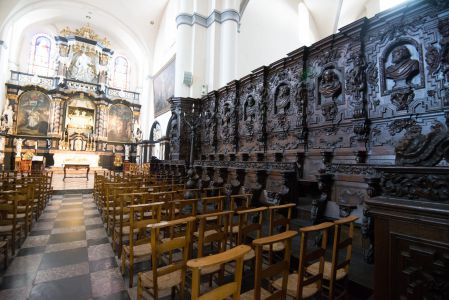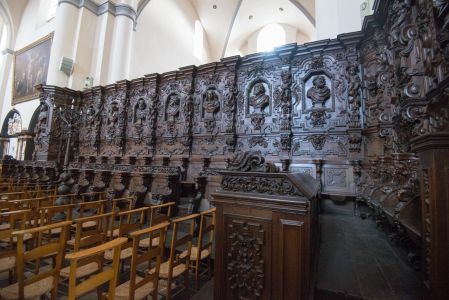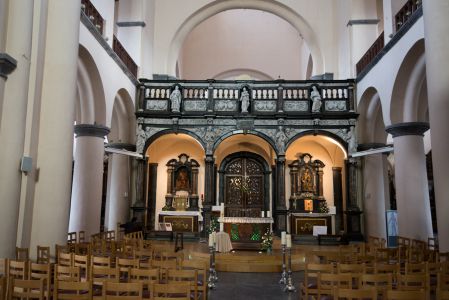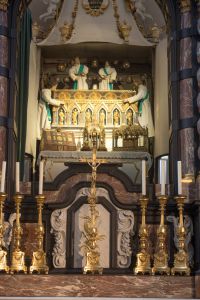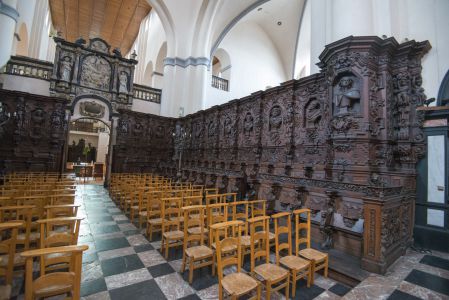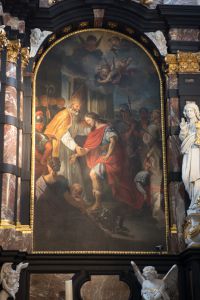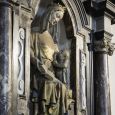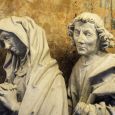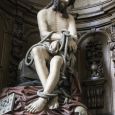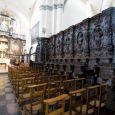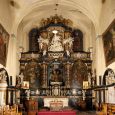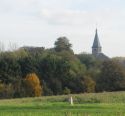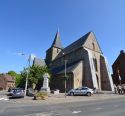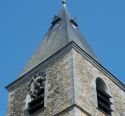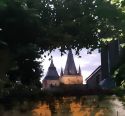Collegiate Church | XI-XII | Romanesque | Catholic Church






Map
Opening hours
01 April - 31 October
Mon 8.00 - 18.00
Tue 8.00 - 18.00
Wed 8.00 - 18.00
Thu 8.00 - 18.00
Fri 8.00 - 18.00
Sat 8.00 - 18.00
Sun 8.00 - 18.00
01 November - 31 March
Mon 8.00 - 17.00
Tue 8.00 - 17.00
Wed 8.00 - 17.00
Thu 8.00 - 17.00
Fri 8.00 - 17.00
Sat 8.00 - 17.00
Sun 8.00 - 17.00
Chapter Museum: open on Sundays from 2pm to 6pm from Pentecost to Heritage Days, and all year round on request.
Tour Saint-Vincent: every Whit Monday
Guided tour
All year round on request for groups: +32 475 77 46 43 - noemiepetit@skynet.be
Religious offices
Saturday: 6.30 pm "Cap Essentiel" mass every 2 months.
Sunday 10.45 am
Description
A superb Romanesque building magnificently restored recently and well worth a visit.
Its construction started around the year 1000 and lasted for nearly 200 years and is the most noteworthy example of Romanesque style in the eastern part of the country.
The church is truly at the heart of the town, which it dominates with its powerful shape with two towers. It is an imposing building, as it has been a place of pilgrimage to St. Vincent, patron saint of the town, since its foundation in the 7th century. The church was the seat of a powerful community of canons until the end of the 18th century.
The interior bathes in a soft light thanks to the colouring of the walls in a pink tinted beige. The ceiling is in light oak. In contrast with the bare lines of the Romanesque architecture, the interior adornment is primarily renaissance and baroque, such as the central rood screen in coloured marble, the fine carved oak stalls of the choir, the pulpit (1670) and the high altar, surmounted by a reliquary containing the relics of St. Vincent.
Among the more precious works of art is a 14th century statue of the Virgin suckling the child on the right of the central rood screen. It is a rare example in religious sculpture of the closeness of mother and child and a sign of the humanisation of religion.
In the passage alongside the choir is ‘the placing in the tomb,' an assembly of sculptures of six persons accompanying the body of Christ and indicating by their attitudes and expressions their emotions and inner feelings. It is an anonymous work but close to the art of Roger de la Pasture.
Adjacent to the collegiate church, the Chapter Museum preserves and showcases the church treasures.
KIKIRPA : Photo-library online
Photos
Media
Remarkable elements
Statue of Our Lady
In the jubé, on the right, an elegant 14th century polychrome sandstone sculpture offers a rather rare iconographic type of the Virgin breastfeeding the infant Jesus. She is holding a book in her right hand, probably the Bible. We can guess the body under the sheets: the cloth is fluid, it adapts to the shapes, and the belt accentuates this desire for realism. These characteristics are typical of Gothic sculpture.
Translated with www.DeepL.com/Translator
Tombing (mil. 15th century)
At the time of this artist, this theme is topical. It is the period of the end of a century that has known famine, epidemics and wars. To lift the hearts, the Church has emphasized the Supreme Sacrifice of Christ, symbolizing the future resurrection and a better life in the hereafter for all ... or almost...
Christ of Mercy (v. 1500)
In the small chapel grafted on the northern crosspiece stands a pathetic Christ of Mercy in polychrome stone from the early 16th century, striking for its realism.
Jubé ( Rood screen)
Dated 1635 and 1641, but probably built from the 16th century onwards, the rood screen conceals the choir from view. Together with the Doctor's Hall of Tournai and that of the Counts' Oracle, it is one of the rare constructions of this type that still exists in Hainaut.
Completely covered with black and red marble, it is a structure with three low arches under a balustrade of Renaissance style, where the sculpted motifs in white stone, according to some, are already reminiscent of the Baroque period.
The spirit of the Counter Reformation is felt in the iconographic programme: the Church teachers emphasise the downward arches at the front, while on the other side the emphasis is on a remarkable resurrection of Christ in high relief.
Translated with www.DeepL.com/Translator
Choir
The choir stalls (1676) in sculpted oak have 64 seats, spread over two levels. It is one of the most impressive collections of this type in Wallonia. It immediately gives an idea of the importance of the Zinnik clergy under the Ancien Régime.
Unity in diversity seems to have been the motto of these furniture makers who have worked to multiply the motifs to the end of the day: putti, wreaths of flowers, hybrid masks, geometric mouldings.
In the niches separated from each other by angels are the busts of the apostles and other saints. They seem to communicate with each other in a game of looks and postures that promote the unity of the whole.
Translated with www.DeepL.com/Translator
Main altar
The high altar (late 17th century) offers a superabundance of colours, reliefs and shapes. In a monumental triple portico structure all in wood painted in imitation marble - baroque illusion! - Painted canvases, statues in the round, openwork balustrades, suspended canopies, stand side by side to create a real "wall of glory".
The central bay, like a grandiose portal, opens onto a high chapel intended for the magnified presentation of the relics of Saint Vincent. An ingenious mechanism brings down the shrine of the patron saint as if it were carried by angels.
Nearby
Circuit
The Middle Ages in the Haute Senne region ( from Soignies to Horrues)
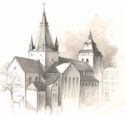
You will discover the Romanesque collegiate church and meet Saint Vincent. At Chaussée-Notre-Dame, it is the Lady of Laire who will be waiting for you. But before you get there, you can admire the landscape of the Haute Senne. Finally, in Horrues, you will learn more about Saint Martin, Saint Hubert and their emblematic animals.
The Middle Ages in the Haute Senne region (full circuit)
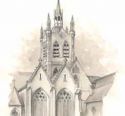
Proudly erected for centuries, churches are witnesses to local history. With castles and farms, they tell about an era and its customs. Are you more of a car person? Our fourth route offers you all the buildings in the program. A great way to learn everything about the region!



